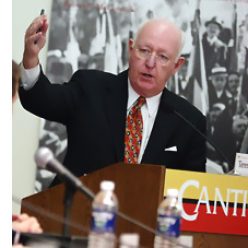Shortly after dawn on the hot, dry morning of June 5, 1967, Israel launched a momentous battle with her Arab neighbors that came to be known as the Six Day War.
In the course of six frantic days, responding to Egypt’s closing of her access to the Red Sea, Israel captured the Sinai, East Jerusalem and the West Bank and the Golan Heights of Syria, redrawing the map and the power structure of the Middle East. The war created a stalemate in Jerusalem and on the West Bank that persists to this day, half a century later. It is the same standoff between Israelis and the Palestinians that confronted President Trump on his recent visit.
I covered the battle for Jerusalem and the West Bank as an incredibly green, inexperienced correspondent for The New York Times. I had arrived in Israel just 10 days before to take up my first foreign assignment and knew … absolutely nothing.
Scrambling after the Israeli tanks in a rented car, I followed the first units inside the ancient walled Old City of Jerusalem on foot as they took control of the broad, open space the Arabs call the Noble sanctuary and Jews call the Temple Mount. Suddenly, the exhausted troops were face to face with the holiest site in Judaism, the western retaining wall of the Second Temple, destroyed by the Romans in 70 A.D.
It was an extraordinary moment that I described in an article that The Times headlined: “Israelis Weep and Pray Beside Wailing Wall.” In truth, the more observant soldiers prayed, while the more secular slumped in the shade to avoid a broiling sun. But no one, religious or secular, failed to realize that they were living history. It was the first time Jews had control of the Temple Mount in 2,000 years.
The battle for Jerusalem and the West Bank was fierce, but it was largely over in 96 hours. Israel had won the war, but not the peace. A settlement with the Palestinians is still beyond their reach 50 years later.
Israelis and Palestinians alike were stunned by the speed of the war and the outcome. Two peoples who had been separated by the so-called “Green Line” and a narrow no-man’s land were suddenly face-to-face.
Both sides were intensely curious about the other.
As soon as they could, Israelis poured into the walled Old City. Curiosity – and the human instinct for bargains – drove them into the Palestinian shops. The shelves on the Jordanian side were stocked with duty-free electronics and small luxuries unavailable in high-tariff Israel. The bargains flew off the shelves.
As soon as they could, Palestinians explored Israeli West Jerusalem and beyond.
In the process of getting to know each other in the first weeks after the war, Palestinians discovered that Israelis were not, in fact, 10 feet tall; Israelis found that Palestinians were not, in fact, all cut-throats.
It was not all sweetness and light – blood had been spilled. But there was a shared assumption that, because the Israeli victory had been so total, that this time there would be a settlement of some sort, maybe even a peace agreement.
It was not to be.
By the fall of 1967, the leaders of the Arab states met in Khartoum and agreed on their famous three no’s: “No negotiation, no recognition, no peace” with Israel.
At the same time, the first Jewish settlers established a rump settlement in a hotel in Hebron on the West Bank, insisting on their biblical right to the land and vowing not to leave. They were the first settlers, but hardly the last: there are some 400,000 Israelis settlers on the West Bank today and 350,000 more in East Jerusalem. They are determined not to leave.
So, all the elements of a stubborn standoff were in place before the year was out.
They are still in place 50 years later.
